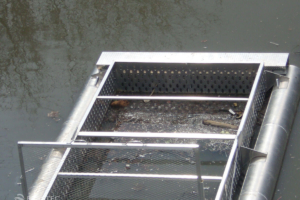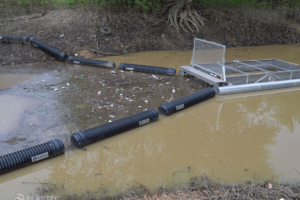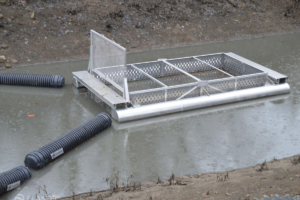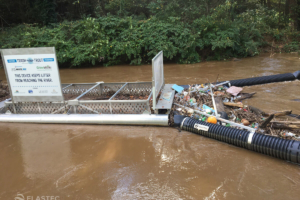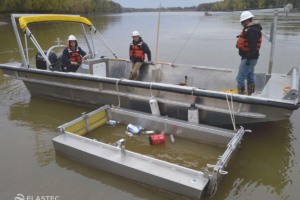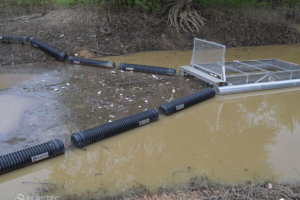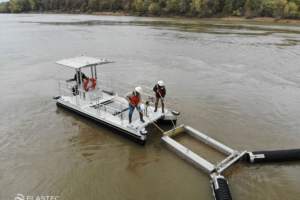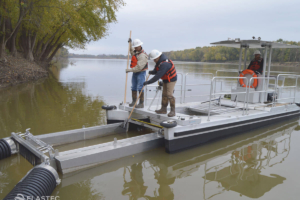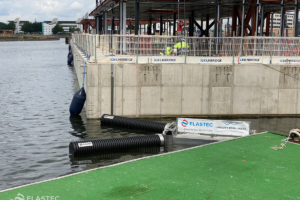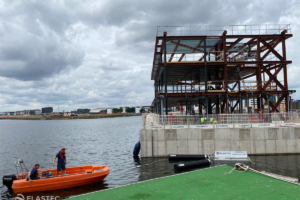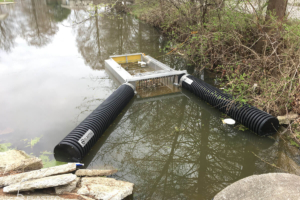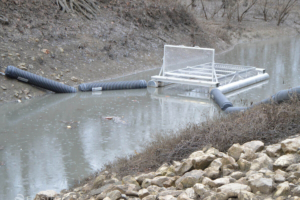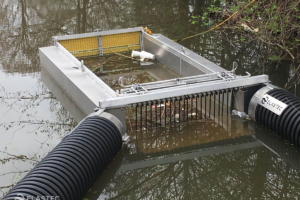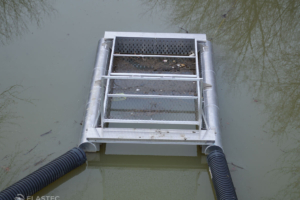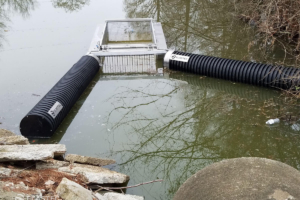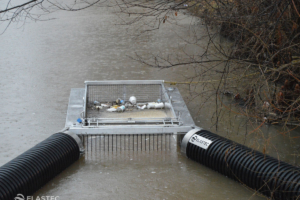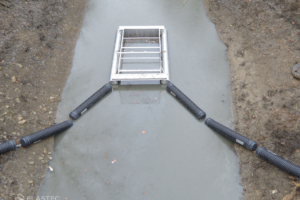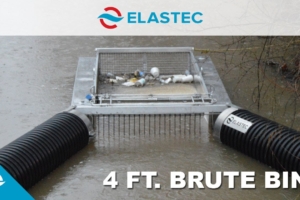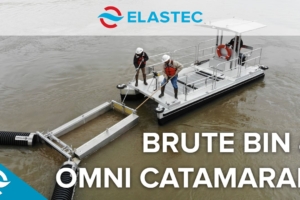BRUTE BIN
Floatable Trash Collection Device
The purpose of the Elastec Brute Bin (Specifications) is to capture floatables from stormwater conveyances and outfalls before they reach our waterways. In the United States, many Municipal Separate Stormwater Systems (MS4) are installing open water trash capture technologies, such as the Brute Bin floating trash collector, to reduce litter loadings into water. Fill out our questionnaire and tell us about your project.

Everyday trash enters our waterways from roadside rubbish carried by wind and stormwater runoff into lakes, streams, wetlands and rivers. Litter can continue to flow downstream into our oceans harming fresh and saltwater ecosystems along the way. “Floatables” such as plastic bottles, bags and straws; aluminum cans; Styrofoam cups and containers; food wrappers and other debris not only damage marine life, it is also unsightly and unsanitary for human life. This type of pollution is referred to as nonpoint source (NPS).
Installation and How it Works
An evaluation of the installation site must first be conducted based upon the local hydrology, current flow speed, trash load levels, easy access for trash removal and maintenance as well as of the surrounding habitat environment. Brute Bin is manufactured in two standard sizes which accommodates most channels. Upon completion of the site evaluation, boom lengths and angles are recommended based upon a modeling formula.
The installation process begins with the mooring of the heavy-duty Brute Boom legs to the channel banks. The Brute Boom legs are attached to the Brute Bin to direct the floatables into the mouth of the basket.
Lifting eyes are strategically located on top of the litter basket to lift and dump the contents by crane. Trash can also be removed manually from the basket from the slip-resistant platform. The system is also designed to accommodate water level fluctuations. Elastec recommends periodic monitoring of the system for trash pickup, especially after major rain events.
BRUTE BIN PHOTOS
BRUTE BIN VIDEO
BRUTE BOOM SPECIFICATIONS
| HDPE, meets ASTM D-3350 standard |
| Internal steel channel ballast |
| 60,000 lb / 27,215 kg breaking strength |
| Shackle: Working load 9,500 lb / 4309 kg | Max load 47,500 lb / 21,545 kg |
| Link: Working load 14,000 lb / 6,350 kg | Max load 70,000 lb / 31,751 kg |
BRUTE BIN SPECIFICATIONS (LARGE)
| 12 x 20 ft footprint / 3.6 x 6 m |
| Slip resistant access walk platforms. |
| Sealed and chambered aluminum pontoons for reserve buoyancy protection |
| Litter basket constructed of marine grade aluminum 6061 with back-flow prevention. Meets ASTM B209 |
| 8 x 16 x 4 ft / 2.4 x 4.8 x 1.2 m |
| 512 cubic ft / 156 cubic m trash capacity |
BRUTE BIN SPECIFICATIONS (SMALL)
| 8 x 12 ft footprint / 2.4 x 3.7 m |
| Slip resistant access walk platforms |
| Sealed and chambered aluminum pontoons for reserve buoyancy protection |
| Liter basket constructed of marine grade aluminum 6061 with back-flow prevention. Meets ASTM B209 |
| 336 cubic ft / 9.5 cubic m trash capacity |
Brute Bin Questionnaire
Thank you for considering the Elastec Brute Bin for your debris collection needs. Please complete this questionnaire so that we may fully assess your requirements.

